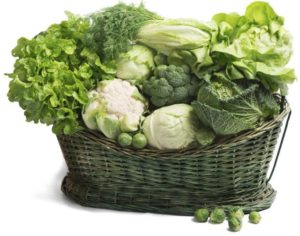Vegetable cellulose is a kind of fiber, and although it’s an important component of a diet, you can’t digest it, and it contains no calories. However, cellulose helps maintain normal digestive function, and also slows your digestive processes, which in turn helps you maintain a more stable blood sugar level and, indirectly, a healthy weight.
Contents
Uses
Even though the structures of cellulose and starch are very similar, you can digest starch, but not cellulose, because humans don’t produce the enzyme necessary for cellulose digestion — though many species of bacteria do. When you consume cellulose, it passes through your stomach and small intestine unscathed, and is eventually broken down by bacteria in the large intestine. They produce gases as a byproduct of cellulose digestion, which is why high-fiber foods can sometimes cause bloating.
Benefits
Digestive Health
Even though you can’t digest cellulose, it has important benefits for your digestive tract. For instance, cellulose adds bulk to the material passing through the tract. This helps your intestine move food along more efficiently. You can think about this in terms of trying to squeeze a ball through a sock; it’s easier to do with a large ball than a small one. A diet high in cellulose from vegetables and other sources promotes regularity.
Other Benefits
Indirectly, eating plenty of cellulose from vegetables and other sources — including whole grains — can help you maintain a healthy weight because fiber slows digestion, explains Dr. Lauralee Sherwood in her book “Human Physiology.” This helps keep blood sugar levels more regular, which can prevent metabolic disorders. Also, you feel full longer, which can help prevent you from eating more calories than you need at any one time.
Top Vegetable Sources
About one-third of all the fiber in vegetables consists of cellulose, reports the Institute of Medicine. This means that the best sources of cellulose are vegetables with the most total fiber. You’ll get about 4 grams of total fiber from 1/2 cup of cooked peas, sweet potatoes, okra and Brussels sprouts. Other good choices, with 2 to 3 grams of fiber per 1/2-cup serving, include asparagus, kale, broccoli and green beans. The recommended daily intake for total fiber, including insoluble and soluble, is 25 grams for women and 38 grams for men, according to the IOM.
Cautions
The Center for Science in the Public Interest reports that cellulose is a safe food additive used to improve texture, prevent sugar from crystallizing and thicken foods. You may experience side effects such as gas, bloating and diarrhea when you consume too much cellulose or suddenly increase the amount of fiber in your diet. If you don’t already eat the recommended 2.5 to 3 cups of veggies daily, you can limit the risk of side effects by adding them to your diet gradually. It’s also important to drink plenty of water. Without sufficient fluids, high amounts of cellulose may block your intestine.
Interactions
None are recorded.
Other names
n/a
References
Source: LiveStrong, http://www.livestrong.com/article/465904-what-are-health-benefits-of-vegetable-cellulose/
LiveStrong, http://www.livestrong.com/article/473504-is-vegetable-cellulose-harmful-to-the-body/

